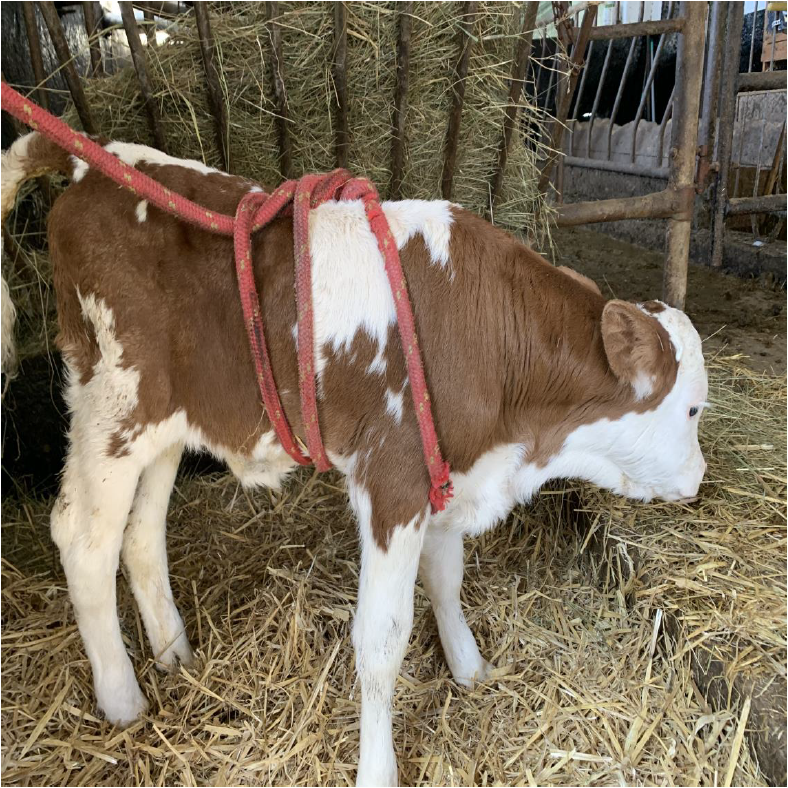To demonstrate the research innovation “Thoracic Squeeze in new-born calves with maladjustment syndrome” in Germany, a presentation was given to a group of beef farmers that visited a meeting of Bundesverband Rind und Schwein e.V. (BRS). In the presentation the theoretical background was explained, a video showed the technique in practical use. The video with the description how to put the rope can be seen here (description in German). Attendees were approximately 20 farmers of suckler farms.
 Calf with rope attached for the squeeze technique Foto:BRS
Calf with rope attached for the squeeze technique Foto:BRSThe innovation was overall seen as beneficial. Every farmer was able to record a situation where he or she thought the technique would have been useful. It was seen as beneficial that after a veterinarian consultation and instruction the farmer should be able to perform the technique by him- or herself. It was seen as very beneficial to have an additional tool to help maladjusted calves without any illness or shortage of nutrients to a better start into life. It was agreed amongst all participants that the technique may be difficult at first to carry out without good instruction. However, it was compared to birth assistance: After good instruction and a bit of experience it should be possible. An obstacle could be the safe exclusion of other problems that may lead to a calf’s bad condition after birth. It was agreed that a veterinary consultation is essential to rule out other reasons as illnesses for the calf’s condition to guarantee the success of the technique. The technique wasn’t seen as a practice used by the “try and error” principle but as a tool worth a try when everything else is ruled out as a course of maladjustment. The costs for equipment are normally equal zero as every farmer own a suitable rope to perform the technique. And even if a rope has to be purchased the costs are practically negligible. The only additional costs are due to veterinary visits to ensure the technique can be performed. On the other hand the farmers agreed the technique had the potential to save veterinary costs as other causes for maladjustment can be ruled out, some calves that might die otherwise would survive and costs for unnecessary medication would be saved. The majority of farmers would recommend this innovation to other farmers as the live and health of some calves may be saved every year without big investments but with an easy to learn technique.
There have been more demonstrations of this research innovation in other countries. In Portugal there was an on-farm demonstration and a webinar; in Ireland there was a demonstration, too.